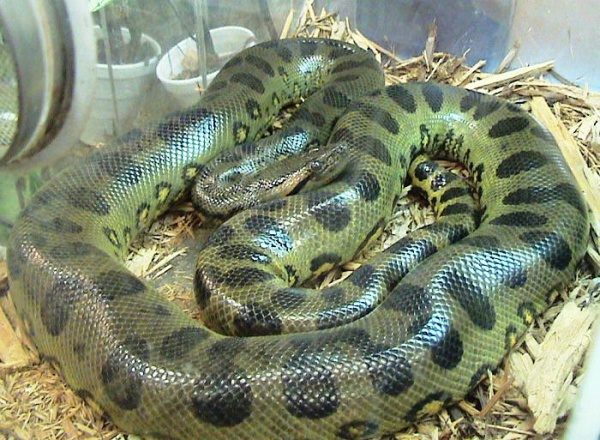Facts About Green anaconda
The green anaconda, also known as the common anaconda, common water boa, or sucuri, is a fascinating non-venomous boa species native to South America. It is renowned for being the heaviest and one of the longest snake species in the world. Its scientific name, Eunectes murinus, is derived from Greek and Latin words meaning "good swimmer" and "of mice" respectively. This ancient species traces its lineage back to the Late Pleistocene epoch, as evidenced by fossil records.
Green anacondas are celebrated for their impressive size. They can grow up to 5.21 meters (17.1 feet) in length and weigh between 30 to 70 kilograms (66 to 154 pounds). Their distinctive coloration includes an olive green background with black blotches and striking orange-yellow stripes on the head. While there are anecdotal reports of anacondas reaching lengths of over 11 meters (35 feet), these claims are typically unsupported by scientific evidence and are often considered exaggerations.
These formidable snakes primarily feed on a variety of prey, using their powerful constriction to subdue their victims. Their diet includes fish, birds, mammals, and other reptiles. Reproduction occurs during the rainy season, with males actively seeking out females for mating.
Green anacondas are found across several South American countries, including Colombia, Venezuela, Brazil, and Peru. They thrive in swamps, marshes, and slow-moving streams within tropical rainforests. These snakes spend much of their time in or near water, where they excel as stealthy and agile swimmers. They are predominantly nocturnal and can move swiftly in aquatic environments.
In popular culture, green anacondas have often been depicted as monstrous, man-eating creatures. The 1997 film "Anaconda" and its sequels are among the most notable portrayals, showcasing these snakes as terrifyingly gigantic predators capable of swallowing adult humans whole. Despite these exaggerated portrayals, the real-life green anaconda remains an awe-inspiring and remarkable species.

 Brazil
Brazil